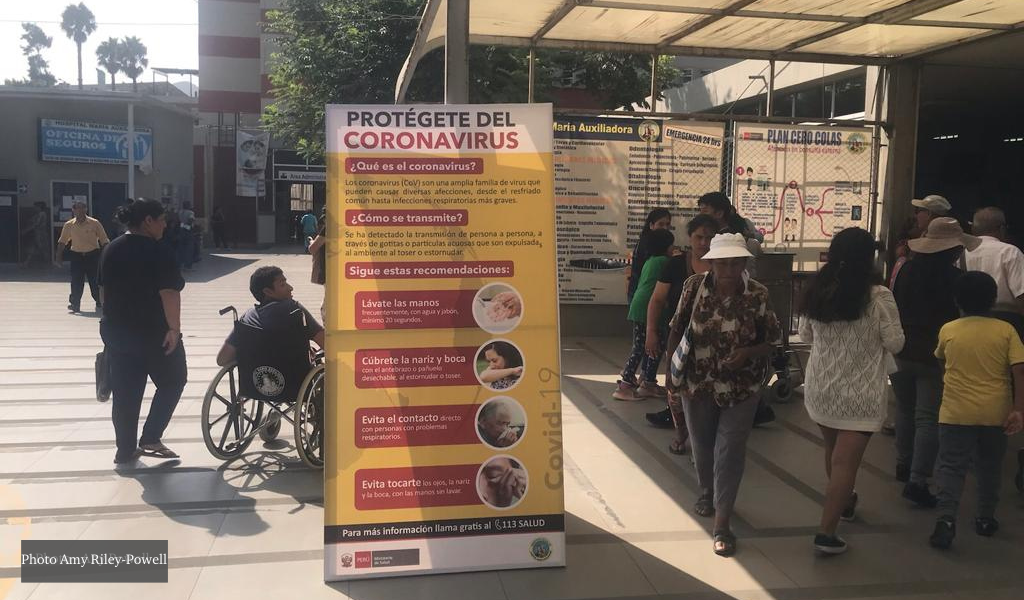The Peruvian government led by President Martin Vizcarra has been praised for their response to Covid-19. A strict lockdown under martial law was swiftly enacted in March and will continue till the end of June, making it one of the longest enforced quarantine periods globally. Despite these early measures, Peru remains the second worst-hit country in South America, after Brazil. There have been many references to unity in the President’s briefings, however, the impact of the measures have not been distributed evenly. The negative effects of quarantine on food security, violence, and the ability to prevent and treat Covid-19 are being felt much more heavily, even catastrophically by people with disabilities who live in poverty.

Inclusion of disability in the emergency response
During the first weeks of quarantine an emergency cash transfer program was announced, the “bono 380”, to support people who live in poverty, or rely on informal work. Whilst this is a welcome support for many, the eligibility is based on a household analysis system which only accounts for people who own their home, thus excluding people who rent, live with friends, on the streets or in institutions, as is common for many people who identify as disabled. To verify eligibility an internet connection and ability to present in person at the bank is required, which for some are insurmountable barriers. Further issues with the cash transfer have been reported, with up to half of the beneficiaries not receiving their payments. No other social protection measures including the suspension of public service tariffs, rent or mortgages has been adopted.
To support and protect people with disabilities an emergency decree was announced, which included a call for increased testing and provisions in institutions, accessible services and prioritising humanitarian assistance. The decree also permits some exceptions to the quarantine measures, such as children with autism being allowed to take short walks. Soon after the start of the quarantine, the Government also announced the creation of support networks for persons with disabilities and older persons, though only a few districts have created these as pilot projects. Whilst the inclusion of disability in the emergency measures represents a progressive milestone, the reality suggests that the benefits are not reaching the most vulnerable as structural barriers discriminate against those who are outside of the system. To benefit from the emergency decree requires a disability certificate, a highly bureaucratic process requiring a significant investment in both time and money. One of the requirements to register as disabled is a national identity card (DNI) which approximately 0.7% of the population do not have. Without this a person is unable to affiliate with basic state health insurance (SIS) or access social protection programs.
Many vulnerable people are excluded from state assistance and are heavily reliant on NGOs and faith-based organisations to deliver essential food supplies. Though even this relies on a certain level of connectedness which many do not have.
Accessibility of information
One of the key public health messages coming from the WHO is around personal hygiene. However little has been done to ensure accessibility and cultural sensitivity of the advice across the diverse three regions of Peru, with public health messaging focusing on the urban centres on the coast. The televised Presidential briefings do have sign language interpretations, but most private channels transmit the messages without the interpreter. The public television transmission of national schooling (to replace school assistance) lacked sign language interpretation and closed caption during the first two weeks. In an interview Alessa, a university student who is blind, reports that there have been some barriers to understanding public health messaging, including confusing wording, distracting background music on videos and written advice that her communication software is unable to read.
The ripple effects of structural violence
There are a number of other devastating ripple effects which will be felt more by women with disabilities living in poverty. There is little doubt that women with disabilities experience more interpersonal violence than their non-disabled peers, and during the Covid-19 crisis many estimate the rate of gender-based violence to increase. Commonly noted triggers for violence include economic stress and food insecurity, both of which are worsening during the state of emergency.
In 2016 Peru made international headlines with unprecedented turnout in the ‘Ni Una Menos’ protests, against the high rates of Gender Based Violence and feminicide, but disabled narratives were largely absent. In the early 2000’s to try and address the high rates of violence, emergency centres for women were set up, providing a 24hour legal, medical and social support service. Crucially women with disabilities and other marginalised identities are often unable to access the centres. This may be due to limited awareness of the services, physical accessibility barriers or fear of discrimination, which are most likely being exacerbated during the Covid-19 crisis.
What’s next for Peru
Whilst the benefits of the emergency Covid-19 response may not be reaching enough people with disabilities, the intentions of the Peruvian government and its twin-track approach to disability is praiseworthy. Existing social policies and entrenched social norms often discriminate against people with disabilities, but this inclusive response could mark a turning point and an opportunity for more inclusive, intersectional policies in the future.